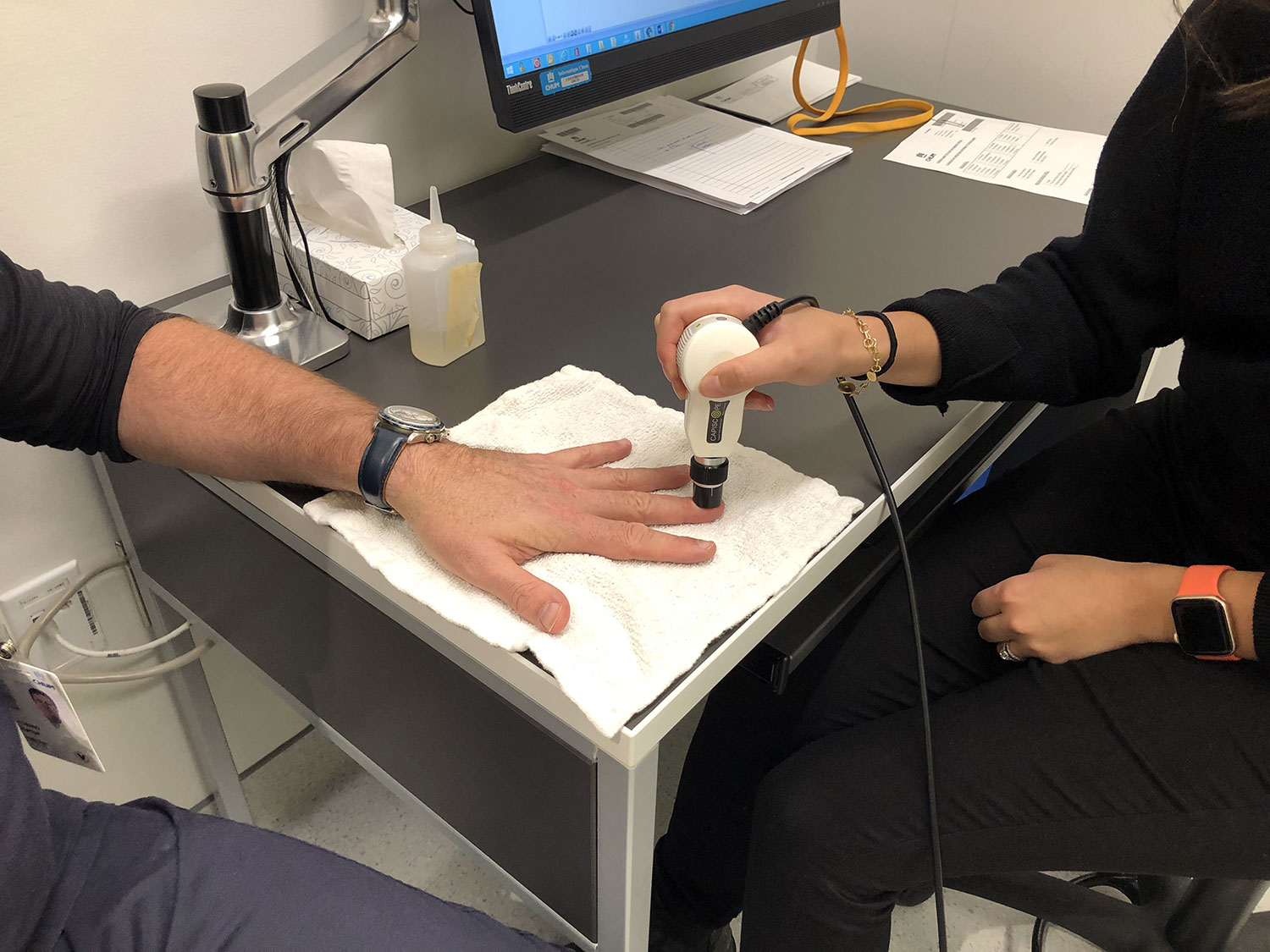Examinations and tests
Physical exam during an in-clinic visit
During your visit to the clinic, the health care professional will inspect and/or examine:
- the skin on your hands and fingers, and sometimes on your feet and face
- the condition of your joints
- the appearance of the area around your nails
- in many cases, your chest and stomach/abdomen
Different areas of the wrist and sometimes the ankle will also be examined to look at the pulse (the beating caused by the flow of blood in the arteries), but also to check the temperature of the skin. The person examining you may also squeeze and release the arteries in your wrists to measure how quickly your fingers return to their normal colour.
What are the different methods for diagnosing Raynaud’s phenomenon?
Raynaud’s phenomenon is usually diagnosed based on discussion and description of symptoms between you and your health care professional, but it can also be diagnosed by directly observing changes in skin colour in the extremities.
Nowadays, patients can use their cell phone or cameras to take pictures during an attack of Raynaud’s phenomenon, and these pictures can be used by the physician to confirm the diagnosis. Thus, if possible, you should take pictures of each “phase” of your Raynaud’s episode and bring them with you to your clinic appointment. During the exam, standard photos of a Raynaud’s phenomenon attack may be shown to you to help make the diagnosis.
One of the main goal of these examinations and tests is to determine whether you are suffering from primary or secondary Raynaud’s phenomenon.
Nailfold capillaroscopy

Capillaroscopy is a test performed using a microscope in order to inspect the, appearance and quantity of small blood vessels (capillaries) located around the nails of the fingers, with the exception of the thumb. This painless procedure lasts roughly 15 minutes and is only conducted in certain specialized clinics. The examination requires the application of oil to the fingers to allow a clear view of the vessels. In primary Raynaud’s phenomenon, the vessels are normal, with some variation in size and number being considered normal between individuals. In secondary Raynaud’s phenomenon, the vessels may be misshapen, blocked, damaged, or fewer in number, depending on the cause. These abnormalities are observable even if the examination is performed in the absence of an active episode of Raynaud’s.
Blood tests
Blood tests are often done for screening or diagnostic purposes, mainly in order to check for antibodies that may hint at an autoimmune disease. Blood tests are also performed to check the proper functioning of the body’s major organs and to detect other diseases.